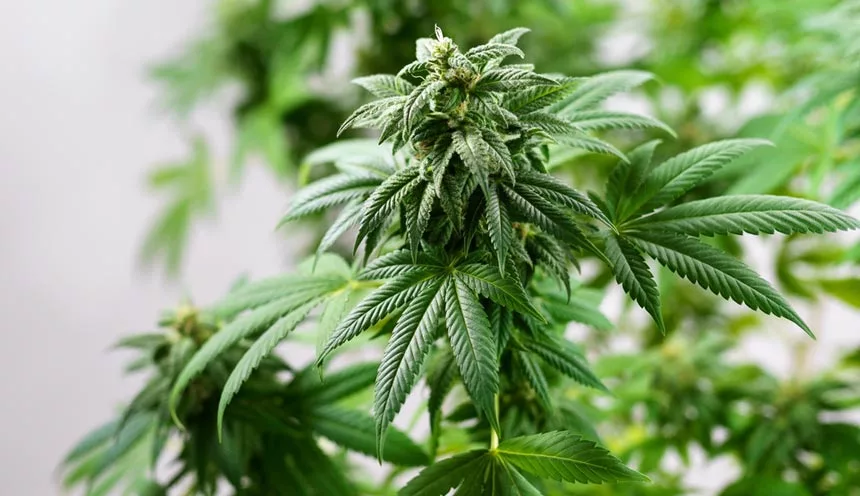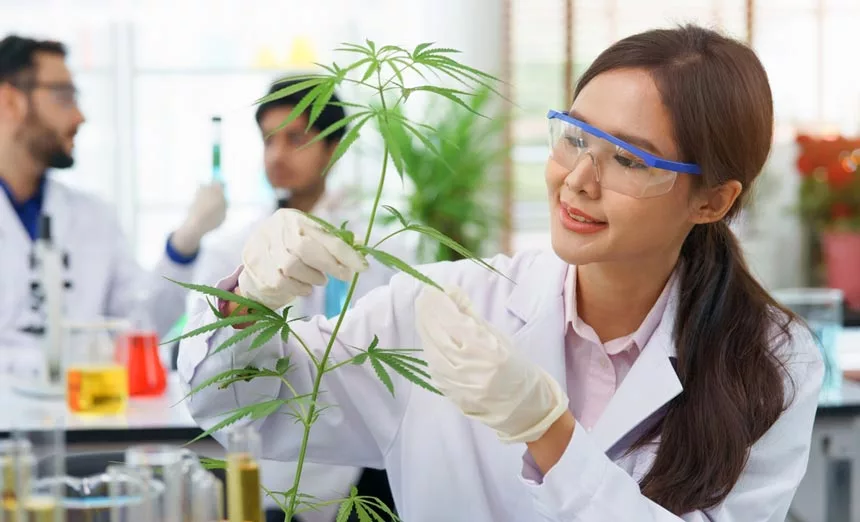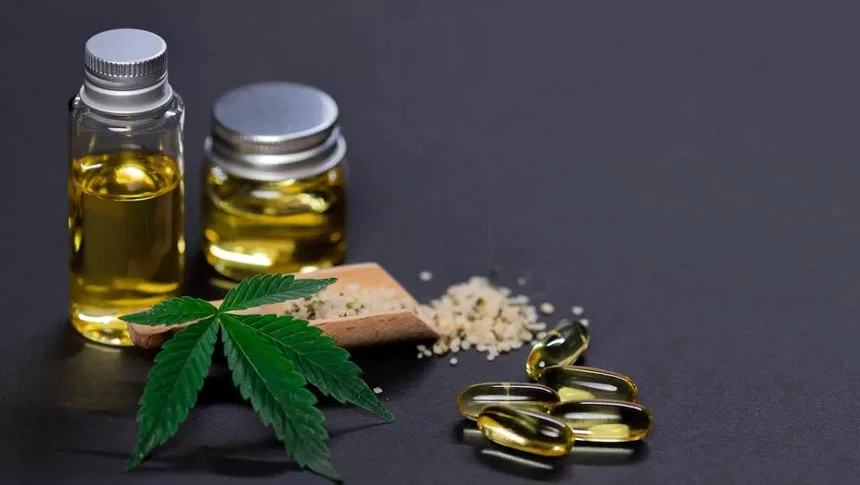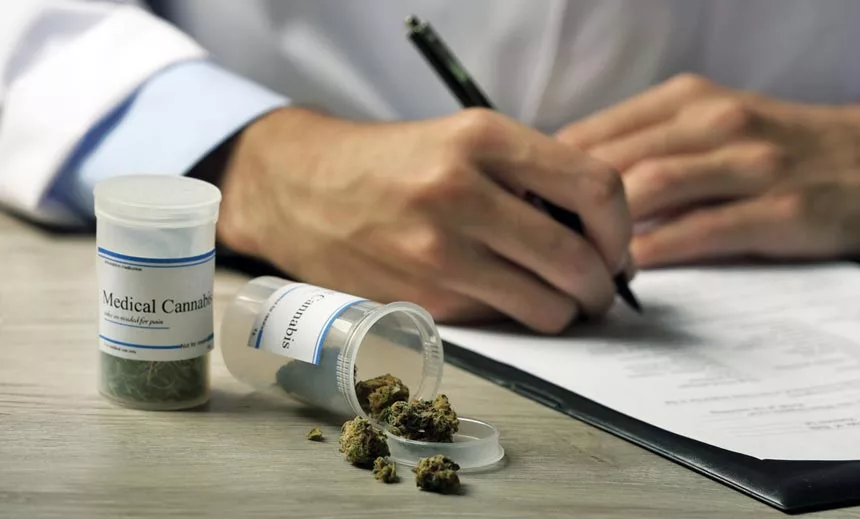Understanding the Differences and Risks Among Marijuana Types
Table of Contents
- Understanding the Differences and Risks Among Marijuana Types
- What Are Indica, Sativa & Hybrid Strains?
- Cannabis Plant Biology
- Fragrances & Flavors from Common Terpenes
- Cannabinoid Profiles
- Expected Effects
- Medical Applications
- Indica vs Sativa vs Hybrid: FAQs
- Tailoring the Experience
- Get Treatment Options for Cannabis Use Disorders Now
Are you aware of the indica vs. sativa vs. hybrid distinction in cannabis? These labels communicate plenty of information about the strains they specify.
If you visit the website related to cannabis cultivars, you’ll notice hundreds of variations available for purchase. Their number will only grow as the plant becomes more popular. How can MMJ users find the one that best meets their needs, suits their lifestyles, and minimizes abuse risk?
Understanding the three categories is an excellent first step. Keep reading to learn about the appearances, aromas, chemical compositions, effects, and medical uses of indica, sativa, and hybrid strains, as well as how to get help if cannabis use has become an issue for you.
What Are Indica, Sativa & Hybrid Strains?

As marijuana legalization expands in the US, so does the number of different strains available to consumers. What are they
The two primary cannabis families are sativa and indica. They have separate geographic origins, and their members’ traits correlate to their native environments. The third kind results from crossbreeding the two groups together, and we call this group hybrid.
Before exploring the different aspects of each, let’s broadly introduce the three groups of cannabis strains.
Indica Strains
Cannabis indica originates from harsh, dry, and turbulent climates of the Hindu Kush mountains. Their native lands include India, Pakistan, Afghanistan, and Turkey. The plants are short, stocky, and bushy, with broad leaves and high harvest potential. They develop and mature quickly.
Indica strains often have high levels of THC and CBD. They’re sought-after for their intensely relaxing physical effects. Their frequent therapeutic applications are for boosting appetite and relieving pain, anxiety, and nausea. The aroma is pungent and spicy.
Popular indica strains include Afghani from Afghanistan and Hindu Kush from its namesake mountain range. Besides the landraces (native cannabis plants with no past breeding), Northern Lights, OG Kush, and Grandaddy Purple are favorites in the cannabis community.
Sativa Strains
Cannabis sativa is native to hot, dry climates with long days. Its indigenous regions include Africa, Central America, Southeast Asia, and parts of Western Asia. The plants are tall and thin, with finger-like leaves. Used to prolonged sunny periods, they take a long time to mature.
Sativa strains typically have higher doses of THC and lower doses of CBD. Their influence includes a “head high” and energizing physical properties. Therapeutic applications include anxiety and fatigue reduction, suitable for daytime use. The flavors are generally sweet.
Popular sativa strains include Durban Poison from South Africa and Acapulco Gold from Mexico. If looking outside landraces, Jack Herer, Sour Diesel, and Green Crack are very sought-after.
Hybrid Strains
Due to the prevalence of cannabis breeding in the past four decades, the US now sees few genetically pure indica or sativa strains. Most original plants came from remote regions like Central America and got selectively bred for more desirable traits.
Hybrids typically grow in farms and greenhouses, and new variations enter the market each year. Their creators combine indica and sativa to bring out their unique qualities. They may make specific strains for ease of growth, potency, color, aromatic note, effect, or medical benefit.
These may be short or tall, depending on the parent plants. Most modern breeders aim for compact cultivars suitable for at-home production. The aroma is strain-dependent but trends toward sweetness. The THC-to-CBD ratio also varies, but they’re often potent.
Hybrids’ effects may combine uplifting and relaxing properties or lean to one side. This quality helps differentiate between indica-dominant, sativa-dominant, and balanced cultivars.
Popular hybrid strains include Do-Si-Dos and Girl Scout cookies from the indica-dominant side. Amnesia Haze and Blue Dream are well-known on the sativa-dominant side.
Cannabis Plant Biology

Cannabis growers can easily recognize and differentiate indica vs. sativa vs. hybrid plants and buds based on appearance. The former two emerged in different climates, which affected their physical traits. The third combines their characteristics for easier cultivation and higher yields.
Let’s first discuss the general traits of the hybrid, indica, and sativa strains. Note that our descriptions depend on the crop environment, though. The same strain can look different depending on the care it gets.
While growing, sativa plants are generally tall and thin. They may reach up to 12 feet in height and are characterized by light-green stems and foliage. The canopy is sparse and consists of thin-fingered, delicate leaves.
Indica plants are short and stocky, rarely surpassing five feet in height. Their stems and branches are thick and covered with broad, short-bladed leaves. The crop resembles a Christmas tree. The color is often dark green, but most purple strains come from this category.
Today’s hybrid plants may be tall with bushier foliage or short with thin leaves. They contain a variety of unique qualities that separate them from landraces. Generally, the cannabis industry prefers those under six feet in height and sturdy, bushy structures.
Most cannabis users don’t encounter plants as they develop, though. So, what do the indica vs. sativa buds look like?
The sativa flower is long and oval-shaped, with light green hues and sparse orange hairs. The trichome crystals don’t generally cover the entire surface but appear as light dustings.
The indica cannabis flower is round, dense, and bulky. It may be a darker shade of green, with many orange hairs covering its surface. Resin production is also prolific in these strains, making the buds suitable for cannabis shatter, wax, and similar extracts.
Hybrid flowers are often dense, long, and very resinous. They get produced with “bag appeal” in mind, meaning they’re thick, sticky, and appealing to cannabis users.
Cannabis cultivators in Northern America generally have more success with indica-dominant hybrids. They withstand harsh weather and deliver more abundant harvests, making them more prevalent on the market.
Sativa is comparatively rare because it requires prolonged sunny periods to produce buds. In recent years, though, genetically optimized sativa-dominant hybrids increased their availability.
Fragrances & Flavors from Common Terpenes
As a rule, sativa smells sweet and citrusy, while indica is grassy and spicy. This distinction isn’t universal, as contemporary plants have varied chemical makeups. Sativa strains may be earthy and sharp, and those smelling like oranges and sugar could have indica effects.
This variance is due to terpenes. The terpene profile is the combination of aromatic chemicals within a bud: it determines a cannabis strain’s aroma.
Cannabis terpenes are its primary aromatic compounds. They’re responsible for the smell, flavor, and even colors the plant produces.
At the moment, there are over 100 known terpenes in cannabis. Myrcene and pinene are universal and appear in large amounts, while others occur sparingly in low quantities.
Myrcene is the most abundant terpene in most cannabis strains. It’s spicy, earthy, and often synonymous with “old-school” scents. Pinene is crisp and citrusy, making the buds refreshing. When they combine, we get the classic earth-and-pine aroma.
Building on the base of common terpenes, the lower-quantity cannabis terpenes can differentiate an indica from a sativa bud.
In general, sativa plants produce valencene and limonene terpenes. Valencene blends fruity and herbal notes, lending orange and mango scents to weed. Limonene gives a citrus scent to the buds, making them reminiscent of lemons.
Indica plants are often rich in caryophyllene and linalool. Caryophyllene is woody, peppery, and responsible for coughing fits when you smoke or vape cannabis. Linalool is mild and perfumey, lending floral qualities to some strains.
Depending on a breeder’s goal, hybrids can produce combinations of different terpenes. Many new and unique strains prioritize sweetness, tasting like fruity and creamy dessert dishes.
Cannabinoid Profiles

Cannabinoids are the active chemical compounds in marijuana. They interact with the brain receptors to induce temporary changes in the mind and body. They’re vital for understanding cannabis strains’ effects and potency.
THC and CBD are the two dominant cannabinoids. THC has psychoactive effects, meaning it induces an intoxicated state. CBD is non-psychoactive (it doesn’t get you high) and has many reported health benefits. Their interaction further determines the marijuana influence, as CBD may inhibit THC and make the experience less intense.
Most strains contain more THC than CBD. The CBD-dominant strains are often products of selective breeding to give little to no psychoactive effects while offering wellness benefits. In nature, indica tends to have more CBD than sativa, while both exhibit mid-to-high THC levels.
Hybrids generally contain more THC and CBD than pure cannabis strains. What’s more, the THC-to-CBD ratio isn’t highly genetics-dependent. Sativa-dominant hybrid strains can exhibit high CBD levels if the breeder intends it.
Besides THC and CBD, marijuana contains other cannabinoids with physical and psychological effects. Notable chemicals include CBN, CBG, and CBC:
- CBN develops when THC breaks down with age. It has some pain-relieving properties and is often sedative.
- CBG is the plant molecule from which other cannabinoids get synthesized. It’s non-psychoactive and believed to have pain and inflammation-relieving traits.
- CBC is a minor compound that might reduce inflammation. It’s also promising in terms of anxiety relief and mood elevation.
Expected Effects
The cannabis plant chemicals induce effects that make them popular among both recreational and medical marijuana users. The genetic group determines the high they bring. The general opinion is that indica strains are relaxing while sativa energizes. In reality, the situation is a bit more complicated.
It’s vital to recognize the experience varies with the cultivar, dose, and individual, but we can make several helpful generalizations. Let’s explore the commonly associated effects of indica vs. sativa and how hybrids enter the picture.
In most cases, the effects begin within 5–45 minutes. They last for 2–6 hours, depending on the delivery method.
Sativa cannabis strains deliver physical and mental energy. People may compare the influence to drinking a large cup of coffee: their focus sharpens, and their bodies become lighter. Depending on the herb and dose, there may be visual and auditory changes like enhanced color and sound perception. The mood uplifts, leaving the person euphoric and carefree.
A sativa strain suits busy, creative, and party-going individuals. Users find the effects ideal for social gatherings, artistic endeavors, and physical exercise. In the case of “trippier” herbs, hallucinations may occur. As the high dissipates, the person usually has enough energy to go on with their day.
Of course, there’s variation in the group. The sativa effects are gentler with strains like Blue Dream and intense with Green Crack and Jack Herer. The former has soft, dream-like qualities, while the latter is sharp and powerful.
Indica strains soothe the mind and body. The experience begins with a buzzing behind the eyelids and across the limbs. The physical sensations are warm and soft, leaving the consumer relaxed and comfortable. Mental tension and negativity drop, making them calm and serene.
These properties are suitable for afternoon use when the aim isn’t productivity. In some cases, some energy remains and goes well with hobbies and creativity. The intensely-relaxing effects may also culminate into a couch lock. It makes the person too heavy to move, causing them to spend several hours in a sedentary buzz. Sleep often comes when the high ends.
Again, variations occur between cultivars. The OG Kush strain might help people let loose and get creative, while Bubba Kush prevents nearly all activity for most consumers.
A hybrid strain may induce a combination of these effects, delivering cerebral effects and body-hitting properties. In many cases, the energizing influence precedes relaxation and can affect how long the marijuana effects last in your system.
These double effects are often favored among folks who consume cannabis. The influence may begin with physical energy and a mental uplift, letting the person stay productive for 2–3 hours. A heaviness settles into the limbs later, resulting in a couch lock for the remainder of the high.
The negative effects of weed don’t depend much on the strain. Indica tends to result in more drowsiness, while sativa makes people prone to jitteriness and elevated anxiety. Hybrid strains’ adverse reactions depend on their genetic composition.
Medical Applications

The effects of cannabis from above have various therapeutic uses. Sought-after herbs among MJJ users span THC and CBD-rich indica and sativa-dominant strains. The application differs based on the individual’s intended use and medical history.
Popular strains for addressing chronic pain and anxiety come from indica families. Their relaxing effect might lessen pain perception and stress preoccupation, offering temporary relief. You may get sleepy after smoking, making them unsuitable for work.
Besides these two uses, indica strains provide nausea relief. This effect is helpful to people undergoing appetite issues, like eating disorders or chemotherapy. They may act as sleep aids, reduce inflammation, and soothe muscle pain and spasms.
People find sativa cannabis strains effective in terms of psychological health. Their uplifting effects are valuable to people with anxiety and depression, helping them find the motivation to pursue healthy habits. On the physical side, they may reduce lighter aches and combat fatigue.
Those with focus disorders like ADHD may also use popular strains from this family to manage their symptoms. Additionally, it might provide appetite and energy boosts to people undergoing intense medical treatments.
How do pure strains vs. hybrid ones compare in terms of therapeutic applications? Given the popularity of medical weed in the States, it’s no wonder many healing cannabis plants have emerged in recent years.
Hybrid cannabis strains may reduce anxiety, pain, nausea, and depression symptoms or address specific conditions. They’re not an exact science, but breeders might create them with therapeutic uses in mind.
It’s possible to find a particular strain designed for health conditions. They still hinge on general indica and sativa effects and can’t deliver benefits not present in the first two groups.
Indica vs Sativa vs Hybrid: FAQs
We’ve covered the general information about indica, sativa, and hybrid strains. If you have additional queries, here are the answers to frequent cultivar-related questions from the cannabis community.
What determines individual strain effects?
The cannabinoid and terpene content determines which effects a strain induces. Cannabinoids, mainly THC and CBD, tell you how intense a high is. More THC means powerful psychoactive properties, while high CBD levels inhibit THC activity.
Terpenes are aromatic compounds that affect how THC and CBD influence the mind and body. For example, myrcene is relaxing while limonene brings energy. The interplay of these classes of chemicals determines the influence of each strain.
Is hybrid an upper or a downer?
The designations of “upper” and “downer” tell you whether you can expect energizing or calming effects from weed. Sativa is generally the former, indica the latter, while hybrid stains can belong to either category.
Since hybrids contain various ratios of indica and sativa genes, their parent strains determine their effect profiles. You’ll have to rely on individual cultivar information.
What gets you more high, indica, sativa, or hybrid?
The effects of cannabis and its potency depend on the percentage of cannabinoids (mainly THC) present in its flowers. A hybrid strain typically induces the most concentrated high.
Landraces contain lower amounts of THC and CBD than those produced in labs. Modern breeders aim for high cannabinoid contents to increase weed’s effectiveness, so choose high-THC hybrid cannabis for intense experiences.
Which is the best for pain, sativa, indica, or hybrid?
Indica strains tend to be popular among pain-relief seekers, as well as those looking for sedation and sleep aids. Sativa may ease minor aches but is generally less effective for discomfort reduction.
Various hybrid cannabis strains share this indica property, though. The industry produced many pain-relievers with some sativa genes to help people manage their conditions without getting too relaxed.
How to choose the right strain for you?
Medical marijuana users should consider their desired use, tolerance, and taste preferences when choosing their ideal strain. Experimentation may be necessary to find your fit.
As a general rule, sativa suits daytime users managing mental health and minor physical conditions. Indica accommodates those looking to reduce pain and stress at nighttime. Hybrids induce full-body effects that combine the prior two properties.
It’s not necessary to settle for one or the other. Certain strains combine physically soothing properties with energy or become sedative after several hours of uplifting sensations.
Tailoring the Experience

To reiterate sativa vs. indica: a sativa cannabis strain is a potent energizer, usually with sweet flavors and high THC levels. An indica is spicier, typically more THC-CBD balanced, and more relaxing. Most cultivars on the market are hybrids with different ratios of these opposing qualities.
You might shorten the indica versus sativa division as nighttime and daytime. Both can be valuable to responsible medical marijuana users, helping them manage their conditions and live their best lives.
Choose the right strain by considering unique traits, consulting with experts, and engaging in trial and error. Everybody’s reactions to marijuana differ, and you can use the available diversity to find your fit.
If you end up deciding to consume cannabis, do so responsibly and with accountability. Only buy seeds and grow weed where it is legal and if you have control of your habits. Please reach out for help and support if the use of cannabis products, medical or otherwise, has begun to have a negative impact on your life.
Get Treatment Options for Cannabis Use Disorders Now
Those who find that they can no longer go about their days without smoking or using marijuana aside from medical necessity may benefit from marijuana addiction treatment services. In a safe and secure setting, you can undergo marijuana detox and learn the tools and resources to rely on for a life that is not dependent on cannabis.
If formal detox and inpatient treatment are inaccessible for any reason, many forms of recovery support groups also exist, with lower costs and more flexible options.
If cannabis use has become a problem in your life or the life of a loved one, please don’t hesitate to reach out to our dedicated team today. All calls are strictly confidential, so please reach out now to get treatment options across the country now!
Eric R. does extensive work in the field of behavioral health as both a professional writer and passionate advocate for those suffering. From his own personal encounters with mental illness, he speaks to those seeking healthy relief from depression and anxiety and embraces wellness both personally and professionally. After losing friends and family to the darkness of suicide, Eric aims to educate and inform about the nature of treatment and render it accessible for all those seeking a way out of darkness and despair.

